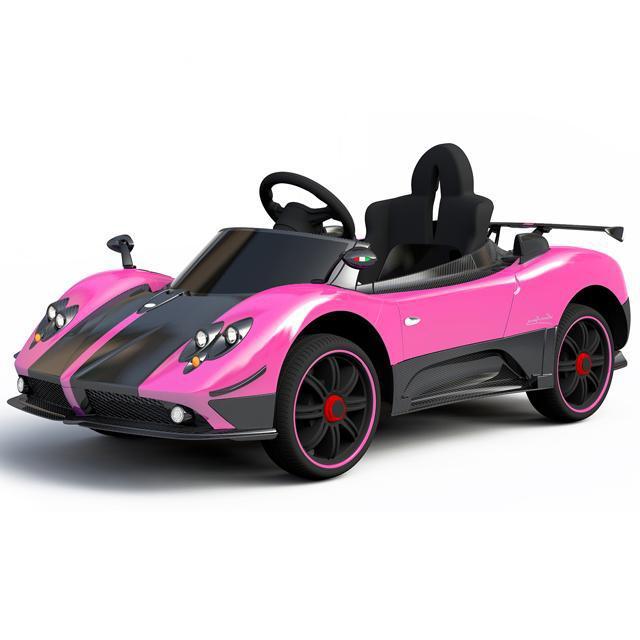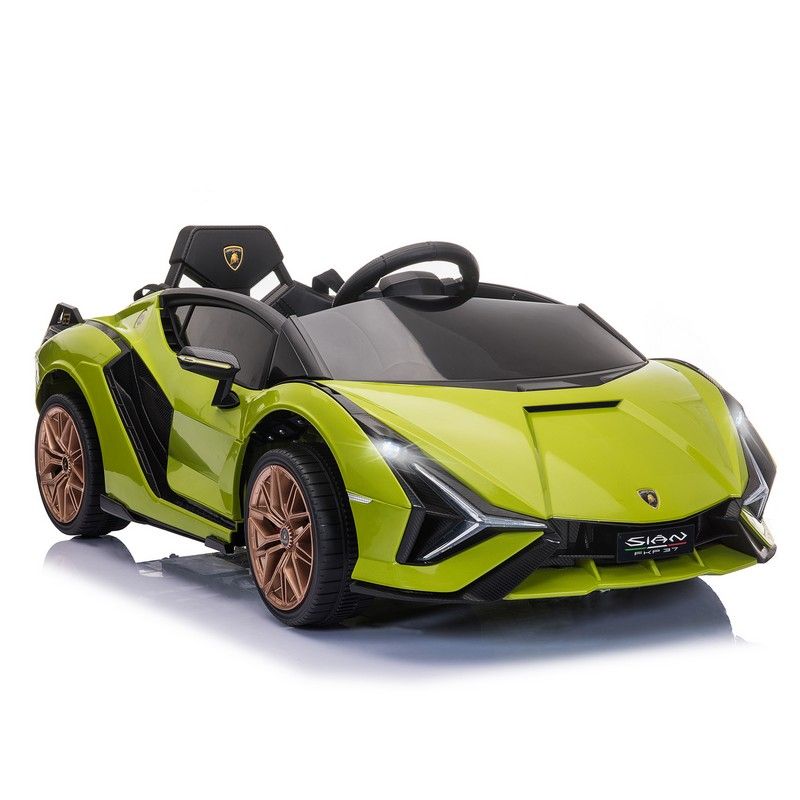When considering ride-on cars for children, it is essential to take into account the age, size, and stage of development in order to make sure that the car is safe, appropriate, and enjoyable for them. Take into consideration these aspects:
Look for cars designed specifically for children aged 1-3 years old. These vehicles have simple controls, a low-profile design that is stable, and the option of a steering wheel or button. Pick cars that have wide bases for stability.
Children who are older (3+years old) As children grow older, they are better at handling advanced vehicles that have many more features and controls. Think about cars that have adjustable seats as well as larger weight capacities. Also look for features that are interactive, like working lights, sounds and music. Look for ride-ons with the ability to change the speed or parental controls to ensure safety and accommodate different skill levels.
Size
When choosing a ride-on vehicle take into consideration your child's weight and height. Select a ride-on vehicle with a seat that fits the child's weight and height. Don't buy cars that are too large or small as they can cause discomfort or danger to travel in.
Comfort and legroom Ensure that your car is spacious enough in room and legroom for your child to comfortably sit. Make sure you check the dimensions of the car, and make sure it is appropriate for your child's.
Developmental Stage
Motor Skills: When choosing a ride-on car, take into account your child's ability to coordinate and their motor skills. Controls for toddlers are easier and they might not be able to handle the more complicated features and controls.
Independence and Confidence. A ride-on car can assist to build independence and confidence as children master the ability to control and navigate the car. Pick a car that allows your child the opportunity to build their motor skills, and also their confidence, through practicing driving, acceleration, and braking independently.
When choosing a ride-on vehicle be sure to consider your child's needs and interests. Select a car that has themes, colors, or features that appeal to your child's interests whether it's a classic automobile, a sports car, a truck, or a themed character vehicle.
Consider your child's size and age, as well as their developmental stage to pick a car that is safe, comfortable, and fun. It will be a great place for many hours of fun and learning for your child as they play and explore. Take a look at the recommended Lamborghini ride on car for blog tips including remote control childrens car, childs electric ride on car, electric two seater cars, riding digger, childs electric ride on car, car toy car toy, childs electric ride on car, ride a toy, ride of car, electric two seater cars and more. .

What Are The Maintenance And Assembly Conditions For Children's Ride-On Vehicles?
To ensure the safety of your children and their durability, most kid's ride-on vehicles require assembly. These are the assembly requirements and routine maintenance requirements for children's rides on cars.
Most ride on cars are not fully assembled upon arrival, and need some assembly. Connecting steering wheels, wheels seats, and other components as in accordance with the specifications given by the manufacturer is typically required.
Please follow the directions for assembly carefully to make sure that all pieces are aligned and properly connected. Use the tools and other hardware to complete assembly.
Cleaning -
The ride-on cars must be cleaned regularly to ensure they look the best and work correctly. Clean up the exterior surfaces with a damp soft sponge or cloth that has been soaked in mild soapy water. This will get rid of dirt, dust and debris.
Be aware of areas prone of accumulation such the wheels, tires, and undercarriage. Use a brush or toothbrush to scrub hard-to-access areas and remove stubborn grime.
Avoid harsh chemicals and harsh cleaners, as they may damage the paintwork or electronic components.
Battery Care
If the ride-on vehicle is powered by a rechargeable battery, proper battery care is essential to ensure performance and extend battery life. Use these guidelines regarding battery care
Fully charge the battery before and after each use to extend the runtime.
Avoid charging batteries excessively or leaving them hooked up to chargers for extended periods. This can cause damage to batteries and reduce the lifespan.
When not in use, store the ride-on car and the battery in a cool, dry location far from direct sunlight.
The terminals of the battery should be examined regularly for damage and corrosion. They may also be cleaned using a wire bristle or terminal cleaner if required.
Replace the battery when it stops holding any charge or displays evidence of damage or degrade.
Tire Maintenance -
Check your tires regularly for signs like damage, wear or loss of air. As needed, use a bicycle air pump or an air compressor to fill the tires to the appropriate pressure.
Check the tread pattern to see whether there is any foreign object or other debris that could cause flats and punctures. Replace the damaged tires and eliminate any obstructions.
Lubricate the wheel bearings and axles on a regular basis to lessen friction.
Repairs or replacements on occasion
Wear and tear or damage from accidents can cause parts of ride-on cars to need to be replaced or repaired.
Be alert for indicators that your system is failing or becoming damaged, including strange noises or behavior and power outages, as well as other anomalies. It is possible to consult the user manual or call customer support to get help for troubleshooting or repair.
Replace worn-out or damaged parts to prevent further harm and to ensure that ride-on vehicles are secure and reliable.
These instructions for maintenance and assembly will help you keep your child's car ride in top condition, allowing them to enjoy safely and have fun. View the top rated click here on kids cars for more tips including electric ride on cars, toy cars toy car, two seater electric cars, 2 seater electric cars, toy a car, two seater childrens electric cars, riding digger, childrens digger, toy toy cars, kidscars and more. .

What Are The Different Kinds Of Remote Controlled Cars For Children? What Are The Pros And Cons?
Remote control cars for children, also known as RC cars, or remote-controlled vehicles are available in different sizes and styles as well as prices to meet various budgets and preferences. Here's a listing of the various types of remote control kids' cars, including the dimensions, cost ranges, and pros and con.
Electric RC Cars – These are remote-controlled, battery-powered cars that can be used both indoors and out. There are a variety of styles of RC cars including buggies, trucks and sportscars.
Nitro RC Cars – Gas powered remote controlled vehicles that provide better performance, but require more maintenance. They're bigger and typically cost more than electric RC Cars.
Scale Models are remote-controlled replicas that include cars, trucks and airplanes. Scale models come in various scales, ranging from 1 -10 to 1 -24 and larger scales providing greater detail and realism.
Sizes -
Remote-controlled cars for kids are available in various sizes. From micro-sized to full-scale replicas, they come in a variety of dimensions and shapes. The size of the car will affect the performance, speed and handling capabilities.
Micro-sized vehicles are compact and light, and therefore ideal for indoor use and play by young children. The larger models offer greater power and durability making them ideal for off-roading or racing.
Prices
The cost of a remote-controlled car for children is dependent on the dimensions and features, the manufacturer, and build-quality.
Micro-sized electric RC cars can be priced between $20 and $100, while larger-scale electric and nitro RC cars are available between $100 and $500 or more.
Scale models and top-quality hobby grade RC cars can cost several hundred dollars up to 1000 dollars, based on the degree of performance and detail.
Pros and Cons
Pros -
Entertainment - Remote controls for children's vehicles provide hours of entertainment and excitement for adults and kids alike.
Skill Development: Operating an RC vehicle helps develop hand-eye coordination, spatial awareness and problem-solving abilities.
Social Interaction: RC vehicles are ideal for social interactions with friends and family.
Aftermarket parts such as upgrades, accessories, and other items from the aftermarket can be used to customize many RC cars and increase their performance.
Cons
Cost – A remote-controlled car for children that has advanced features or even hobby grade models can be expensive.
Learning Curve: Operating a RC Car requires training and experience young children may be unable to master the task initially.
Maintenance is essential for RC car owners. They need to clean regularly, lubricate and perform repairs or replace parts.
Safety Issues - RC vehicles can be dangerous in the event that they aren't operated properly under the supervision of an adult. They could result in accidents, falls and electrical hazards.
Remote-controlled cars for kids can be a fantastic enjoyable and educational experience. However, it's crucial to select the appropriate model based on the factors of size, safety, price and features. Hobby-grade RC cars may be more suitable for older children and avid users, whereas simpler models are best for young kids and novices. Follow the recommended kids cars kidscars.co.uk info for website tips including toy with car, electric two seater cars, cars pedal car, toy car toy car, electric rideons, toy car for car, toy car toy car, electric ride on cars, toy car for car, riding digger and more. .
